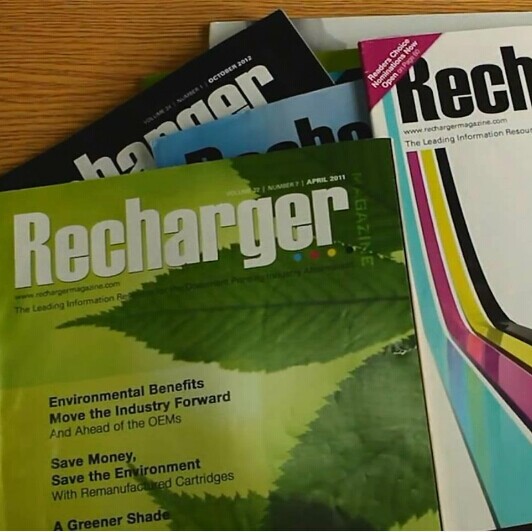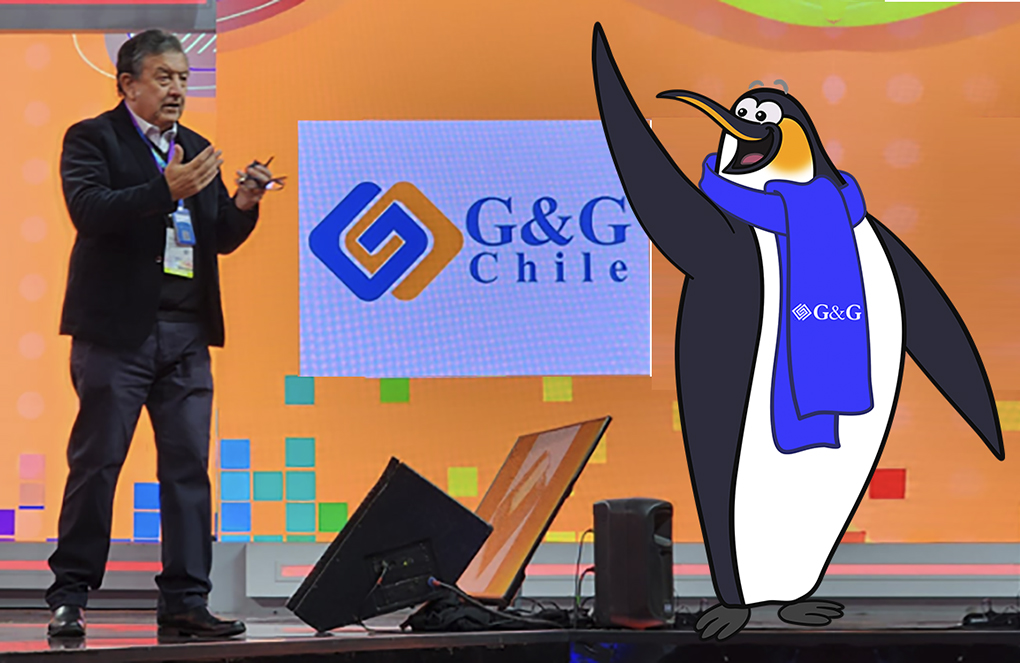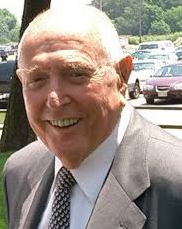A Call for Donation of Industry Publications to Challenge Week Patents
 Veteran imaging expert Art Diamond has called upon the printer cartridge remanufacturing industry in North America to pool their copies of the former Recharger Magazine.
Veteran imaging expert Art Diamond has called upon the printer cartridge remanufacturing industry in North America to pool their copies of the former Recharger Magazine.
All 277 editions of this iconic journal over14 years will become a useful resource tool for patent attorneys, industry experts and leaders, wishing to challenge weak imaging patents.
Well known industry identities including Phyllis Gurgevich, Steve Michlin and Nestor Saporiti have quickly rallied to Diamond’s call.
The collection will be housed at the Graphic Communication Department of the California Polytechnic State University.
Early this year, Diamond Research Corporation donated its complete library of books, magazines, conference binders, documents, and pertinent reports to the Graphic Communication Institute at Cal Poly in San Luis Obispo, California. The Diamond Collection joins the Wadewitz Collection and other acquisitions housed at Cal Poly in what is the largest graphic arts library in the world. This unique resource will soon be available to scientists, attorneys, students and others for searches, reports and reviews.
Through a massive industry effort headed by printing industry guru Raymond J. Prince, the resources were developed to complete Phase I of this huge undertaking; the raising of $100,000 needed for preparation, transportation, storage, inventorying, and the drawing-up of plans for a permanent site on the Cal Poly campus. Phase II, the renovation of a site and annual maintenance and oversight is underway and will take a similar effort. This could not happen without the support of the many industry leaders, many of who already provided financial contributions to help invigorate the largest and most famous graphic arts library.
Dr. Harvey Levenson, Professor Emeritus at CalPoly, said in an interview with Recycling Times, “This library is very important for prior art because very often, patent examiners rely only on previous patents, as prior art. A lot of them are not aware of the technology, particularly in esoteric fields such as graphic communication. A lot of them are not aware that there are publications, there are journal articles, there are books and magazines that describe certain technologies about patents that are out there. And by having this library, we have an opportunity to actually educate the examiners about what prior art is out there that they would never really be aware of. And this is particularly important for underlining secondary considerations like determining whether there is commercial success, or long-felt need, or failure of others, or whether prior art teaches away from the invention, or whether there is copying involved. All of this will not show up in previous patents, but will show up in published prior art. And here is where a library such as we have at CalPoly can be very helpful in patent cases.”
Dr. Levenson added, “The university does not go to court… Therefore, the collection that we have would not per say be what the university would use to help defend someone in court. However, faculty members are typically called upon as independent consultants, to provide expert testimony based on prior art, other evidence, other disclosures that are required in lawsuits… Now the importance of the collection, as prior art collection, is that it’s accessible. It’s all in one spot. If any faculty member, who participates independently as an expert witness, wants to review the finals and go through the publications, the books, the magazines, journals. They all there in one spot and it’s convenient…It is open to the public. Therefore, any person from industry, who’s doing exploration for prior art or for any other reason or purpose, is allowed to come in and review the collection, or request, through the university, that a research be done for them. ”
Many technicians, engineers and scientists are aware of the monthly periodicals in the cartridge remanufacturing industry for more than 25 years. The earliest of these industry publications was Recharger Magazine, followed by The Recycler, R&R News, Imaging News, Recycling Times, and others. These periodicals have featured columns detailing the step-by-step procedure of cartridge remanufacturing. Therefore, there is no invention or innovation in these operations. And any issued patent or patent application claiming disassembly, repair, recharge or reassembly as an invention should be challenged.
You’re Welcome to Contact Us!
You can provide opinions and comments on this story!
Or you can send us your own story!
Please contact Doris Huang, Head of News & Editorial, via Doris.Huang@iRecyclingTimes.com







Leave a Comment
Want to join the discussion?Feel free to contribute!